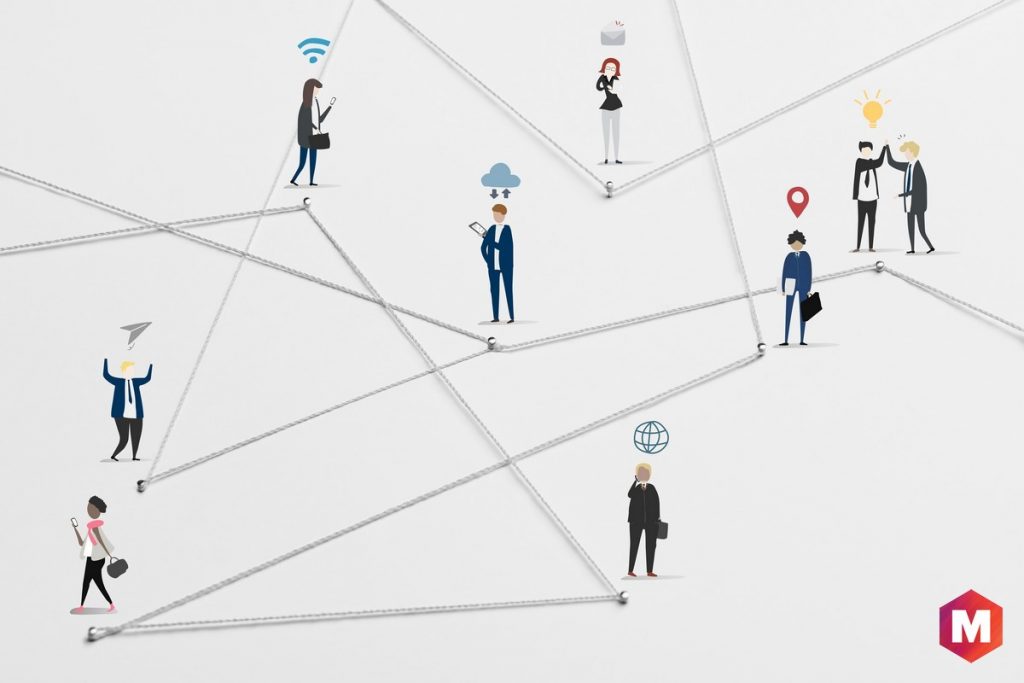Table of Contents
What is Information Dissemination?
Information dissemination is the systematic distribution of scientific and technological information to those who need to know it. For research to have the biggest impact, the findings must be made available to as many people as possible, in a way that is clear and accessible.
Information dissemination is the process of sharing new or existing information with others. It can be done verbally, through writing, or via technology. Dissemination is a key component of effective communication, as it ensures that information reaches its intended audience. The term is most commonly used in the context of news media, but it can also apply to other forms of communication, such as marketing or advertising.
Information dissemination is the process by which facts are made available to the general public. How individuals and other organizations communicate information has grown tremendously in recent years. It is no longer limited to face-to-face conversation or the exchange of written correspondence. Technology has played a big role in changing the way information is disseminated.
As a proactive information service, it educates and informs targeted groups of people about issues, possibilities, and problems of their interest. For its transmission to the target, it necessitates systematic planning, gathering, organization, and information storage.
Available resources and information regarding the coronavirus are constantly changing and evolving. Information dissemination is critical to ensure that people have the most up-to-date and accurate information to protect themselves and their loved ones.
There are many ways to disseminate information, including traditional media (television, radio, and print), new media (social media and the internet), and word-of-mouth. No one source of information is perfect, so it’s important to consult multiple sources to get the most accurate picture.
Why Disseminate Information?
There are many reasons why people disseminate information, but the most common reason is to share knowledge. In a business setting, for example, new information about products or services can be disseminated to customers and potential customers. This is often done through marketing campaigns and other forms of advertising.
In the news media, information is disseminated in order to keep the public informed about current events. Newspapers, television news programs, and radio broadcasts are all examples of ways in which information can be disseminated to a large audience.
Information can also be disseminated on a more personal level, such as when a friend tells you about a new restaurant that they tried. In this case, the goal is usually to simply share information rather than to promote something specific.
It is commonly used in healthcare research to ensure that studies are communicated effectively and in a way that is understandable to the public. Communication strategies are important in order for effective information processing and dissemination. Currently, there is a great deal of interest in healthcare and public health research.
How is Information Disseminated?
There are many different ways in which information can be disseminated. The most common method is through verbal communication, such as face-to-face conversations, phone calls, and speeches.
Written communication is another popular method of dissemination, and can take the form of emails, letters, articles, or even books. In recent years, technology has also played a big role in how information is disseminated. The internet, social media, and text messaging are all examples of ways in which information can be quickly and easily shared with others.
No matter what method is used, the goal of dissemination is always to ensure that the information reaches its intended audience.
There are a variety of communication strategies that can be used to disseminate information, and it is important to choose the right strategy for the audience and the message.
One important factor to consider when choosing a communication strategy is the same direction of the message. If the message is going in the same direction as the audience’s interests, then it is more likely to be received and processed effectively.
Another important factor to consider is the type of information that is being disseminated. Some information is more complex than others and requires different strategies for dissemination.
Importance of Information Dissemination
Information dissemination is important because it helps to ensure that people have the knowledge they need to make informed decisions. Some of the common reasons behind its importance are-
1. Problem-centered Nature of Adult Learning:
In general, information dissemination is important because it helps to ensure that people have the knowledge they need to make informed decisions. However, it is especially important for adults, who are typically more autonomous than children and therefore have a greater need for information.
2. Special Nature of Information Dissemination for Adult Community:
The process of disseminating information to adults is often different than it is for children. This is because adults are more likely to be interested in specific topics and have a greater need for accuracy and detail. As such, information must be tailored to meet the needs of the adult audience.
3. Solving Information Overload:
In today’s world, there is an overwhelming amount of information available. As such, it can be difficult for people to sort through everything and find the information they need. Information dissemination can help to solve this problem by making it easier for people to access the information they need.
4. Resolving Inaccurate Information Issues:
Another problem that plagues the internet is the presence of inaccurate information. This can be harmful because it can lead people to make wrong decisions based on false information. Information dissemination can help to combat this problem by providing accurate and reliable information.
5. Solutions to issues arising due to Lack of Knowledge:
In some cases, people simply lack the knowledge needed to make informed decisions. Information dissemination can help to bridge this gap by providing people with the information they need to make informed choices.
Customizing Information for Dissemination
You can customize information for dissemination in a number of ways. The most important thing is to ensure that the information is tailored to meet the needs of the audience. Some other factors to consider include the following:
1. The medium of dissemination
The medium you use to disseminate information will have a big impact on how it is received. For example, face-to-face communication is typically more personal and intimate than written communication. As such, it is often more effective for conveying sensitive or complex information.
2. The message
The message you want to disseminate should be clear, concise, and easy to understand. It should also be relevant to the needs of the audience.
3. The method
The method you use to disseminate information will also play a role in how it is received. For example, if you are disseminating information to a large group of people, you will need to use a different method than if you are disseminating information to a small group.
4. The time
The timing of dissemination is also important. In some cases, it is best to disseminate information as soon as possible. However, in other cases, it may be best to wait until the audience is ready to receive the information.
5. The location
The location of dissemination can also impact how the information is received. In some cases, it may be best to disseminate information in a public place. However, in other cases, it may be better to disseminate information in a private setting.
6. Issues of Relevance to Adult Community
The process of information dissemination is not always straightforward. In some cases, the information may not be relevant to the needs of the audience. As such, it is important to assess the needs of the audience before disseminating information.
7. Assessing Information Needs
In order to ensure that the information you disseminate is relevant to the needs of the audience, you must first assess their needs. This can be done through a variety of methods, such as surveys, interviews, and focus groups.
8. Types of Information for Communication
Not all information is appropriate for communication. In some cases, the information may be too sensitive or complex. As such, it is important to consider the type of information you want to communicate before disseminating it.
9. Media and language for Communication
The media and language you use to communicate information will also play a role in how it is received. In some cases, it may be best to use a simple approach. However, in other cases, it may be better to use a more complex and sophisticated approach.
The bottom line is that there is no one-size-fits-all approach to information dissemination. The best way to ensure that the information is received and understood is to tailor it to the needs of the audience.
Approaches to Information Dissemination
There are a number of different approaches that can be used for information dissemination. The most important thing is to choose an approach that is appropriate for the needs of the audience. Some of the most common approaches include the following:
1. Information Sessions
Information sessions are a good way to disseminate information to a large group of people. They can be used to provide an overview of a topic or to provide detailed information about a specific issue.
2. Workshops
Workshops are a more interactive form of information dissemination. They are typically used to provide information about a specific topic or issue.
3. Seminars
Seminars are similar to workshops, but they typically involve a larger group of people. They can be used to provide information about a specific topic or issue.
4. Webinars
Webinars are a type of seminar that is conducted online. They can be used to provide information about a specific topic or issue.
5. Information Packets
Information packets are a good way to disseminate information to a large group of people. They can be used to provide an overview of a topic or to provide detailed information about a specific issue.
6. World wide web
It has drastically changed the way information is disseminated through its global network by sharing information in digital format or HTML format with ease. It can also broadcast information of various types to meet end users. Text messages, phone calls, social media, e-books, and email are all ways to disseminate public information.
Information dissemination through Traditional Media Outlets:
The dissemination of information is the process of sharing or distributing information from one person or entity to another. In the context of public relations and marketing, information dissemination is the act of sharing timely, relevant, and accurate information about an organization with its public.
There are many ways to disseminate information, but one of the most common and effective methods is through traditional & mass media outlets. Traditional media outlets include print media (print newspapers, magazines) and broadcast media (television, radio).
When used correctly, traditional media outlets can be a powerful tool for disseminating information. They can help to raise awareness about an organization and its products or services, and they can also build trust and credibility.
As you can see, there are a number of different approaches that can be used for information dissemination. The most important thing is to choose an approach that is appropriate for the needs of the audience.
Types of Information to Disseminate
There are a number of different types of information that can be disseminated. The most important thing is to choose a type of information that is appropriate for the needs of the audience. Some of the most common types of information include the following:
1. Warnings or advisories
These include severe weather warnings, public safety advisories, health, and medical advisories, etc.
2. Emergency information
This includes information about evacuation routes, where to find shelter, how to contact loved ones, etc.
3. Educational information
This can include anything from school closures to tips on how to stay safe during a disaster.
4. Information about resources
This can include where to find food and water, how to get in touch with relief organizations, etc.
5. Reunification information
This can include setting up reunification centers for families who have been separated during a disaster.
6. Recovery information
This can include information about rebuilding after a disaster, financial assistance programs, etc.
7. Miscellaneous information
This can include anything else that doesn’t fit into the other categories.
Conclusion
On the final note, it can be said that Information dissemination is a process of sharing or transmitting information from one person to another. It can be done verbally, through writing, or by other means such as telephone, radio, television, and the Internet.
There are many reasons why people disseminate information, including to inform others of something important, to persuade them to take action, or to simply entertain them. Dissemination can be a powerful tool for social change.
What do you think is the most effective way to disseminate information? Why?
Have you considered the latest trends in information dissemination?
In recent years, the rise of social media platforms has transformed how information is disseminated. According to the Pew Research Center, in 2021, approximately 72% of American adults used social media, with platforms like Facebook and Twitter becoming primary sources of news and information for many. These platforms not only provide instant access to a vast audience but also offer interactive and engaging ways to share content, making them valuable tools for disseminating information quickly and effectively.
For those looking to maximize their dissemination efforts, harnessing tools such as Google Analytics and Hootsuite can be invaluable. Google Analytics helps in understanding web traffic and user behavior, allowing for the customization of content strategies. Hootsuite, on the other hand, is beneficial for managing and scheduling social media posts across multiple platforms, ensuring consistent and timely information delivery. These tools empower organizations and individuals to tailor their information dissemination strategies to meet the specific needs and preferences of their target audiences effectively.
Liked this post? Check out the complete series on Communication



this study is so much study interesting and now I just want to know the influence of technology in the information dissemination
thank you